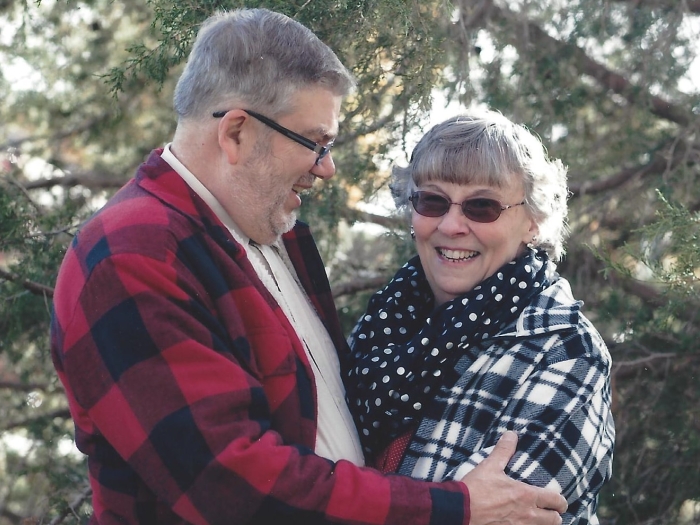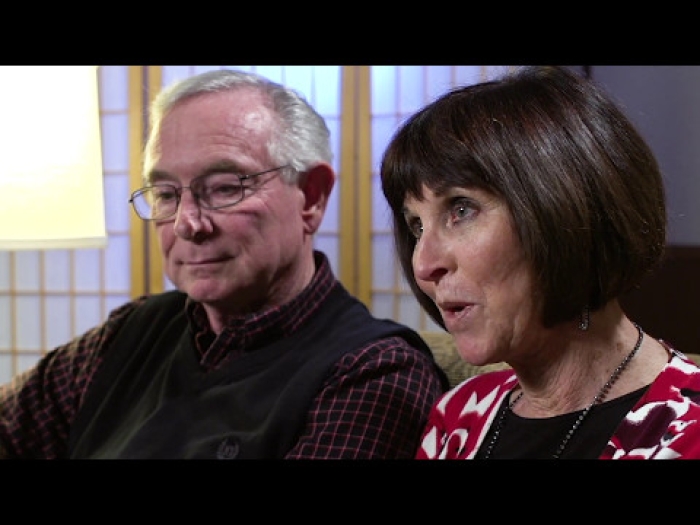When one young woman suffered a life threatening brain aneurysm, her family went above and beyond to raise money for research to aid in her recovery.
5:00 AM
Author |

Sarah Walton's brain hemhorrage at age 22 nearly ended her life. As she reflects on her experience three years later, she acknowledges the roles that fate, pride and gratitude have played in her remarkable recovery and the life she's living today.
Her story begins on October 30, 2016, when she awoke with the worst headache of her life. As a teenager who experienced migraines, she was accustomed to headaches, but none as debilitating as this.
Undeniable fate
"I was physically ill from the headache and stayed in bed that morning," Walton says. As her condition deteriorated, it was fate she says that her fiancé, Zack, returned home early from a hunting trip, arriving that morning. He couldn't say what prompted him to cut his trip short, but his unexpected arrival and quick action were monumental in saving her life.
But the odds were against her from the beginning.
Walton was taken to the local hospital in her hometown of Clare, Michigan, and immediately put on life support after being diagnosed with a brain aneurysm that resulted in a brain bleed, also known as a hemorrhagic stroke. The outlook was grim, with doctors giving her only a 10% chance of survival without significant disability. She was transported to a hospital 30 minutes away for treatment. Once there, it was discovered she would need the expertise of a skilled neurosurgeon. At the request of her father, Walton was then air lifted to Michigan Medicine in Ann Arbor via its Survival Flight.
The Michigan Medicine neurosurgery team gathered to determine the best course of action. Because aneurysms similar to Walton's are sometimes the result of a blood infection (also known as mycotic aneurysms), the decision was made to begin treatment with antibiotics.
MORE FROM MICHIGAN: Sign up for our weekly newsletter
Surrounded by her family who kept a close watch, Walton seemed to improve, although she was nowhere near out of danger.
"Any time there is a brain aneurysm bleed, time is of the essence as a fraction of patients will die before reaching the hospital," says Michigan Medicine neurosurgeon Aditya S. Pandey, M.D. "Fifty percent of those who do make it to the hospital may become disabled for life."
Walton recalls being awake and fairly alert on some days during her antibiotic treatment, but admits: "I knew I might not make it."
Twelve days after being put on antibiotics, imaging tests revealed Walton's aneurysm had grown. "We decided it was time to perform surgery as the antibiotics had failed," says Pandey.
"When antibiotics fail and the infection-related brain aneurysms grow, we immediately pursue treatment strategies," he says, noting that possible treatment includes open surgery to snap shut the aneurysm, or a catheter approach in which coils are placed in the aneurysm via a catheter inserted through an artery in the leg or arm. This minimally invasive approach results in clotting within the aneurysm, which prevents blood from getting into it.
"In Sarah's case, open surgery was the best approach given the location and shape of the aneurysm and our ability to close the aneurysm while maintaining blood flow within the vessel," says Pandey.
On November 11, a few hours after surgery, Walton was eating a cookie and walking, says her sister, Laura Crawford. "They were calling her the 'Miracle Girl.'"
But recovery would take months of dedication on Walton's part as she struggled to speak. Therapy included her own initiative to work as a waitress, requiring her to communicate with restaurant customers. Eventually, she was once again able to form her words and speak clearly.
Family pride
During Crawford's time at her sister's bedside, she learned more and more about brain aneurysms and discovered a troublesome statistic: "The federal government funds only 83 cents for each afflicted patient," says Crawford. "I was so frustrated that I decided to organize a fundraiser for brain aneurysm awareness and research."
Like Podcasts? Add the Michigan Medicine News Break to your Alexa-enabled device or subscribe for daily updates on iTunes, Google Play and Stitcher.
That fundraiser, the Michigan Brain Aneurysm Awareness 5K, held in the family's hometown of Clare, has proved enormously successful, says Walton, who couldn't be any prouder of her sister, Laura, and parents for their commitment to brain aneurysm awareness. She acknowledges them as the force behind raising nearly $30,000 in only two years. The 3rd Annual Michigan Brain Aneurysm Awareness 5K Walk/Run will take place on Saturday, May 16, 2020.
"Lots of people came from around the state," says Crawford. "We raised $17,000 in the first race in 2018 and an additional $12,000 in 2019."
Immeasurable thanks
The success attracted the attention of Pandey, who gives tremendous credit and thanks to Laura Crawford and her family for their work in establishing the fundraiser to benefit brain aneurysm awareness and research.
"The Walton family experienced what it's like have a loved one on the edge of not surviving. They recognized how much effort goes into the recovery of a patient with a brain aneurysm and understood the complexities involved. They understood that nearly 50% of all brain bleed patients become disabled for life and wanted to change this grave reality," Pandey says.
The family's support is helping to develop certain medications to make the recovery process easier for these patients, Pandey says. "Such medications have potential in reducing human suffering from brain bleeds worldwide. While the most complex surgeries may be performed in developed nations, the development of medications will allow for their use worldwide."
Walton couldn't agree more as she is back to living a full life that might not have been. Married to Zack and mother to daughter, Lena, she understands firsthand the need for enhanced awareness and research surrounding brain aneurysms.
She knows how fortunate she is to have overcome insurmountable odds and is thankful to her healthcare professionals and to her family who continues their commitment to helping those with life threatening brain aneurysms.

Explore a variety of health care news & stories by visiting the Health Lab home page for more articles.

Department of Communication at Michigan Medicine
Want top health & research news weekly? Sign up for Health Lab’s newsletters today!





